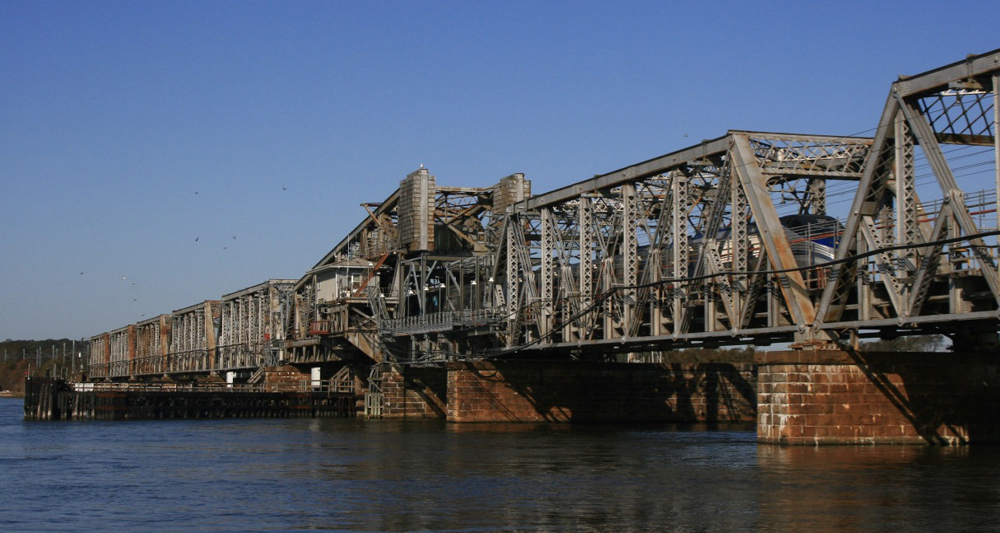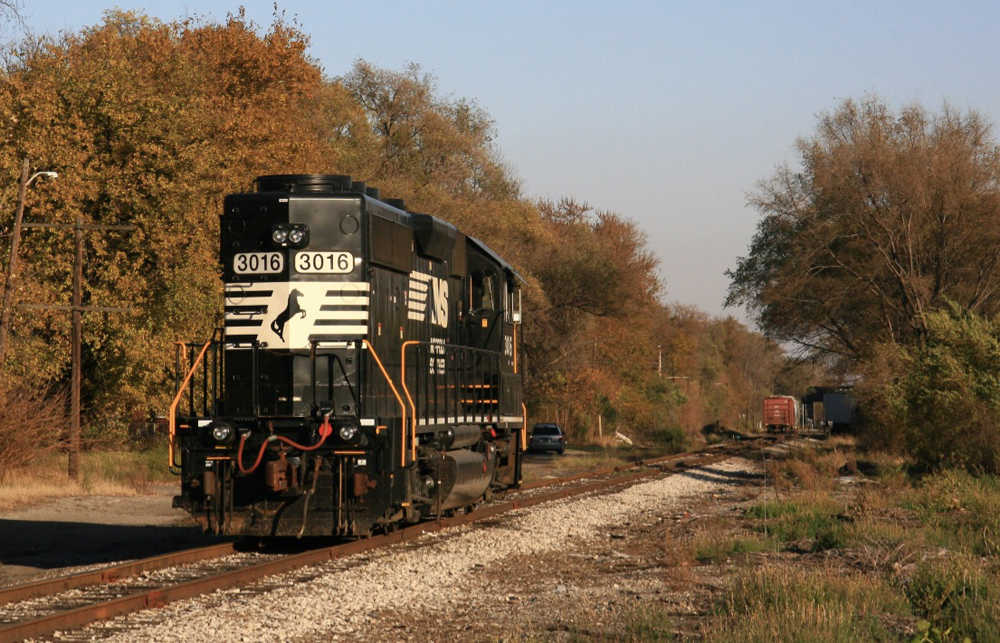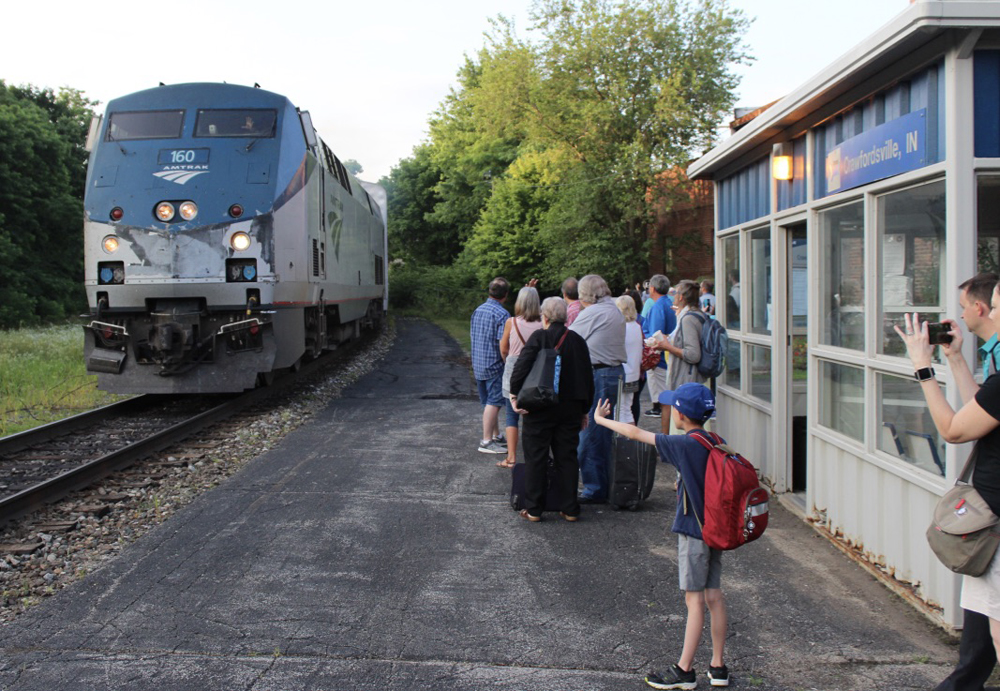
WASHINGTON — The infrastructure bill signed into law in November opens the door for the possibility of more rail funding than Amtrak and states sponsoring intercity passenger service have ever received at one time.
The challenge now will be to get money out that door and spend it wisely.
How much funding?
More than $66 billion of rail-related funding over a five-year period is locked in, with an additional $36 billion “authorized” under the companion Surface Transportation Investment Act, which can be appropriated from discretionary funds. But good luck with that.
Amtrak usually gets about $2 billion each year for capital and operations. That includes infrastructure spending, which explains why there is such a huge backlog of Northeast Corridor bridge and tunnel projects. The largest one-shot infusion previously was $8 billion doled out by the Federal Railroad Administration in 2009’s American Recovery and Reinvestment Act.
”Guaranteed” Infrastructure Act funds are divided this way:
— $22 billion directly to Amtrak. That includes $16 billion directed to national network state-of-good-repair capital projects and rolling stock, including making stations compliant with Americans with Disability Act regulations. A $50 million annual carve-out would pay operating costs necessary to restart passenger service on discontinued routes, with the federal government paying a declining scale from 90% to 30% of total costs over the first six years service is restored. Another $6 billion is for Northeast Corridor infrastructure investment purposes.
— $36 billion in FRA Federal-State competitive partnership grants. Of this, $24 billion is for Northeast Corridor investment in accordance with the Northeast Corridor Commission’s 15-year “Connect 2035” blueprint for improvements. Some $12 billion is to improve or add corridors outside the NEC, sponsored by states or regional commissions. High-speed rail systems are eligible to apply, but an additional $10 billion directed solely at those projects is tied up in stalled “Build Back Better” legislation.
— $8 billion for other competitive grants. This includes $5 billion for Consolidated Rail Infrastructure and Safety Improvement (CRISI) grants and $3 billion for highway grade crossing elimination and public safety
The legislation also doubles private activity bond authority from $15 billion to $30 billion, and sets aside $250 million for the U.S. Department of Transportation to pay up to 10% of the credit risk premium, with a $20 million cap on Railroad Rehabilitation and Improvement Financing loans. These changes could help solve financial logjams at companies ranging from short lines to Brightline and Texas Central.
The priority challenge
Distribution of two-thirds of the funding, $44 billion over 5 years, depends on grant parameters to be established by the Federal Railroad Administration. This is a huge undertaking that requires additional analytical personnel to determine why one proposal should be prioritized over another. The agency had trouble rising to the occasion in 2009, but now at least has that experience to draw on.
While the FRA has been given 180 days from Nov. 15 to outline these criteria, it did issue a “Notice of Funding Opportunity” on Dec, 7 for Federal-State Partnership for State of Good Repair Grants totaling $198 million authorized in 2021. The federal contribution is capped at 80%, but selection preference will be given to applications, due March 7, 2022, that propose a 50% or less share of project costs. This could provide a template for how the $44 billion will be awarded.

A significant hurdle, however, is that grants for projects of national importance will still require a state or regional commission to apply for and sponsor them. Many states may choose to forego the rail investment opportunity because it is a one-shot deal, as opposed to ongoing funding for highway projects. This happened in 2009 when Florida, Wisconsin, and Ohio turned back expansion funds the FRA had designated.
States that haven’t yet made specific rail investment plans will likely be at a significant disadvantage compared with those that have the next phase of long-term projects ready to go. North Carolina and Virginia have been working on restoring the ex-Seaboard “S” line between Raleigh, N.C., and Richmond, Va., since 1997. California developed a state rail plan and has a mechanism, like Virginia, to fund a local match.
But because the FRA and Michigan’s Department of Transportation couldn’t identify a funding stream to build a separate passenger rail right-of-way around the southern tip of Lake Michigan, the agencies pulled the plug in 2018 rather than advance the plan to the Final Environmental Impact Statement phase. If that hadn’t happened, a major national network bottleneck could now be on its way to elimination.
State buy-in needed

Will states step up? Many have DOTs that lack sufficient in-house grant writing or rail engineering expertise, so will have to hire outside consultants. Early this year, Indiana’s Republican-majority legislature killed an attempt to form a rail commission that could have managed the process. In 2019, the state’s governor cut $3 million in annual operations funding, thus eliminating the Indianapolis-Chicago Hoosier State.
Withdrawn funding struck again in Missouri, which will lose one St. Louis-Kansas City Missouri River Runner round trip on Jan. 3, 2022, because the money ran out. The state, like Indiana, could apply for infrastructure improvements benefitting passenger trains and host-railroad freight traffic, but would the FRA make those awards when ongoing operating support might be shaky?
There is no question the new funding offers the promise that many worthy projects will get funded. Yet requiring buy-in by states, and layering investment on top of the Passenger Rail Investment and Improvement Act framework, will be a challenge the FRA will have to account for when it begins awarding the money.
Additional News Wire reading:
“Northeast Corridor Commission releases $117 billion infrastructure plan,” July 14, 2021.
“News and analysis: State budget cap threatens second Missouri River Runner round-trip,” Oct. 21, 2021
“Infrastructure bill addresses Amtrak priorities, congressional requirements,” Nov. 8, 2021.
“Not just Amtrak: Infrastructure bill boosts freight projects, too,” Nov. 8, 2021.
Coming Dec. 31: News Wire’s No. 1 story of 2021.
Previously:
News Wire Top 10: The runners up.
Top 10, No. 9 (tie): The STB and Wall Street.
Top 10, No. 9 (tie): Amtrak sidelines equipment, turns away revenue.
Top 10, No. 8: Climate challenges.
Top 10, No. 7: Railroad crew shortages.
Top 10, No. 6: Battery-electric and hydrogen locomotives.
Top 10, No. 5: Amtrak spars with CSX, NS over Gulf Coast service.
Top 10, No. 4: East Broad Top’s revival continues.
Top 10, No. 3: A snarled supply chain.














What about LIRR, NYCTA, MetroNorth or other Regional Railways?
Washington State also has a good rail division. The Cascade Trains are very successful between Washington State, Oregon, and British Columbia.
“Many have DOTs that lack sufficient in-house grant writing or rail engineering expertise, so will have to hire outside consultants.” — Trains
Yup! That is New York State, and one can see the result in the Empire Corridor EIS going on Year 12 of non-release (DEIS was released Spring 2014). Many in the state legislature talk big about “High Speed Rail” but planning and building by hired consultants results in disaster, as seen in California with its HSR project. Long-term in-house knowledge and capacity is needed.
NYSDOT had a sizable and active Rail Division that 1970-80s got a lot done and was transparent in issuing annual reports, but the Gov. Mario Cuomo axed in the name of smaller government and the shiny object that was then maglev and is today hyperloop. Give all the money to Virginia and North Carolina because (1) they deserve it for organizing well for rail investment (2) they’re the only ones who can spend it because they organized well for rail investment.
Question: Where does the proposal to reroute passenger trains on the former ICRR direct into Union Station fit into the new scheme of things? This proposal has been hanging around for as long as there has been Amtrak, half a century. That must be some sort of record for a project proposed but not implemented.
Question, does anyone know anything about the Wabash route in Indiana? All I know about it is that it never was more than a secondary. Where would it connect to existing routes on each end? The December 1957 Official Guide shows a mixed train taking six hours or so to get from Gary to Montpelier. Montpelier being a stop in the NW corner of Ohio on the Detroit to Fort Wayne main line.
As far as I can tell, the former Wabash route would intersect the former Michigan Central freight line southwest from Porter (Indiana) (I believe now abandoned). If restored this could connect into Porter to both routes, east toward Toledo and northeast toward Kalamazoo. That would be the east end of the bypass. West from Gary into Chicago I don’t have a clue.
To make any of this work, a flyover at Porter might be needed – Michigan Central SW to NE, flying over the former New York Central main west to east.
Confused? The former Michigan Central Railroad west from Porter was one of the truly obscure freight lines in the Chicago area, once connecting Porter to Joliet. If you drive Interstate 57 south from Chicago you will pass over a bicycle trail paralleling (to the north) the former EJ&E by the Valspar paint plant, this being in Matteson in the extreme SW corner of Cook County, several miles east of Joliet which is in Will County.
I highly recommend you get a copy of the now out of print SPV Great Lakes East and Great Lakes West RR atlases. They’ll answer all your route questions. The Wabash route did carry some priority traffic into Chicago, but was gradually superceded in favor of the NKP after 1964. The first spot theoretical Amtrak trains might want to join it is at Crocker IN, where it met the MC coming down from Porter. At East Gary the MC Joliet branch continued southwest, and the passenger main to Kensington IL where it joined the IC veered to the northwest.
Oops, meant to say it was the EJE fro Porter that crossed the WAB at Crocker.
Charles, let me address your first question. The plan had been, during the early days of the CREATE initiative, to use the old NKP bridge at 79th Street that goes over the CN/IC’s two main tracks and Metra Electric District’s four mains. Originally, that ROW then dropped down to ground level, ducked under the PRR and NYC, came up on the north side and used the NYC to LaSalle Street Station. The CREATE plan was for a ramp up to the Conrail/NS Chicago Line and the establishment of a new Interlocking. However, that plan was wrapped up with a plan to forge a new way around downtown for CN/IC so the St. Charles Air Line and its crossings of the Metra Rock Island District at 16th&Clark Streets and Amtrak at 21st Street could be abandoned. CN/IC was to use the same bridge and ramp as Amtrak. The embankment on which the CR/NS Chicago Line is on at that point would have been widened to accomodate one track that CN/IC would use to 59th Street where they would use an old east/west PRR I alignment that would take them to the CR/NS and CSX north/south lines that cross the former GM&O at Brighton Park. A new connection in the southwest quadrant of the crossing would be built for CN/IC to turn west to Glenn Yard and Joliet. The CN/IC component of the 79th Street connection died when CN/IC pulled out of CREATE because it became clear that state, local, and federal funding for the CREATE program was not forthcoming, at least not in the amounts originally pledged (surprise, surprise). So they decided to seek their own way around Chicago to link up with the former, now CN, Wisconsin Central. After that the appetite for the Amtrak connection evaporated.